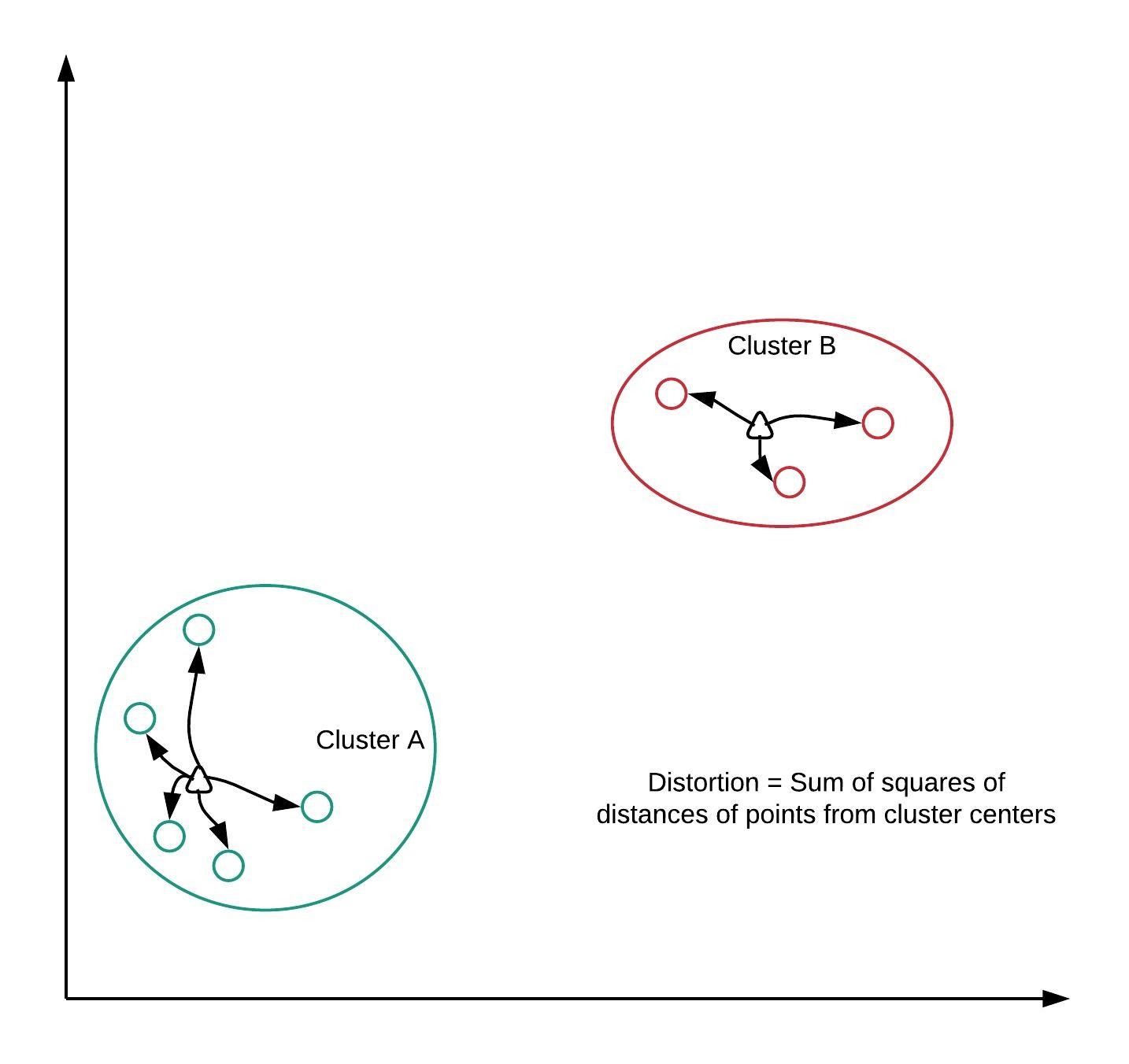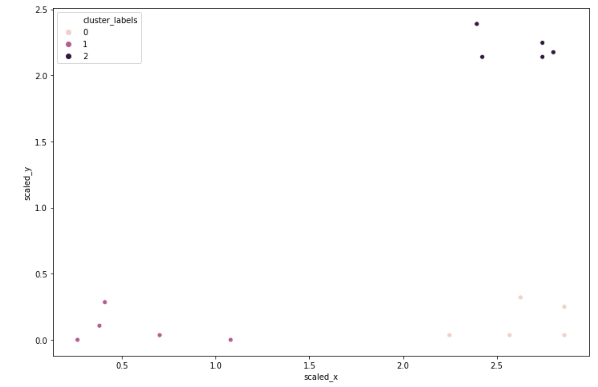Basics of k-means clustering
Cluster Analysis in Python

Shaumik Daityari
Business Analyst
Why k-means clustering?
- A critical drawback of hierarchical clustering: runtime
- K means runs significantly faster on large datasets
Step 1: Generate cluster centers
kmeans(obs, k_or_guess, iter, thresh, check_finite)
obs: standardized observationsk_or_guess: number of clustersiter: number of iterations (default: 20)thres: threshold (default: 1e-05)check_finite: whether to check if observations contain only finite numbers (default: True)
Returns two objects: cluster centers, distortion
How is distortion calculated?

Step 2: Generate cluster labels
vq(obs, code_book, check_finite=True)
obs: standardized observationscode_book: cluster centerscheck_finite: whether to check if observations contain only finite numbers (default: True)
Returns two objects: a list of cluster labels, a list of distortions
A note on distortions
kmeansreturns a single value of distortionsvqreturns a list of distortions.
Running k-means
# Import kmeans and vq functions
from scipy.cluster.vq import kmeans, vq
# Generate cluster centers and labels
cluster_centers, _ = kmeans(df[['scaled_x', 'scaled_y']], 3)
df['cluster_labels'], _ = vq(df[['scaled_x', 'scaled_y']], cluster_centers)
# Plot clusters
sns.scatterplot(x='scaled_x', y='scaled_y', hue='cluster_labels', data=df)
plt.show()

Next up: exercises!
Cluster Analysis in Python

